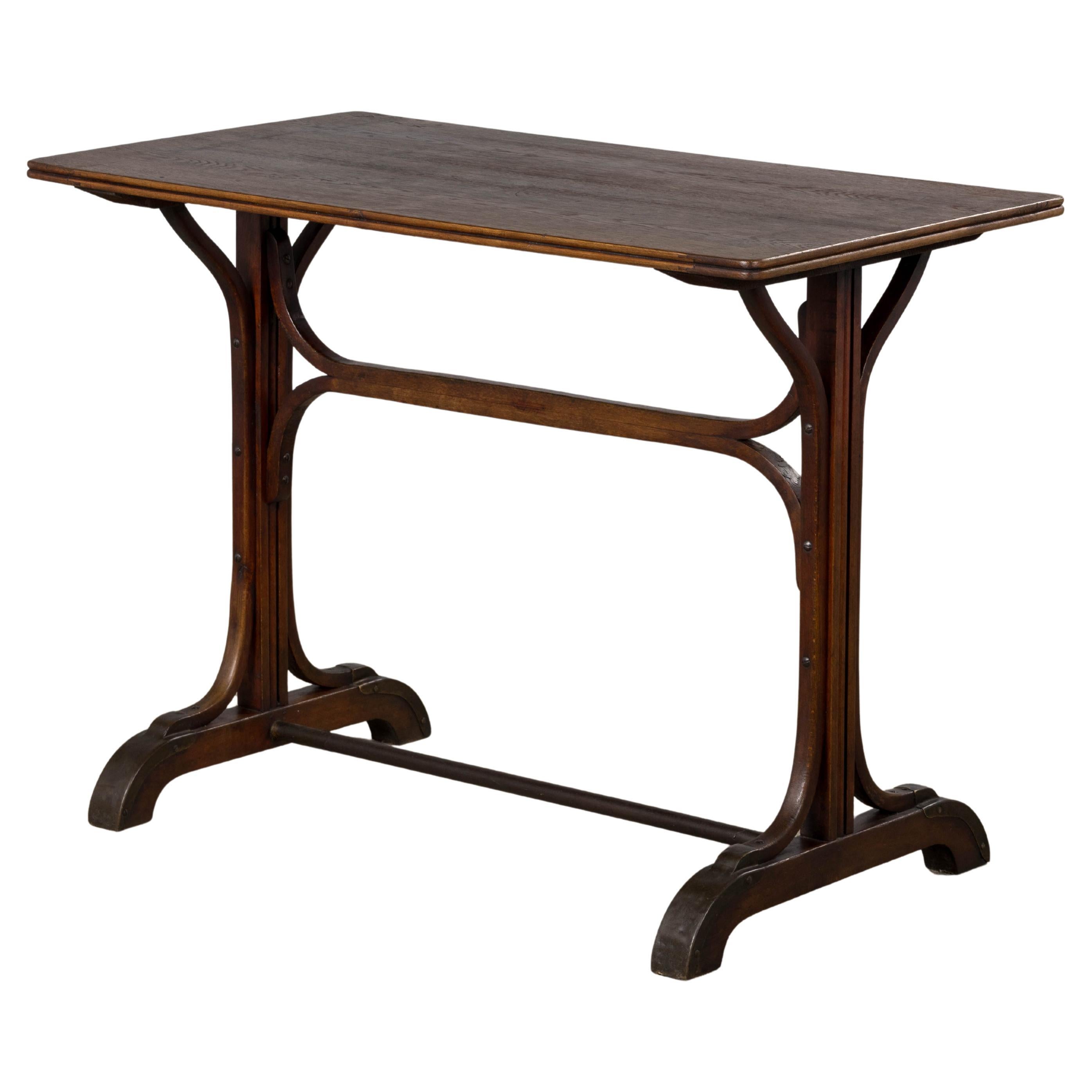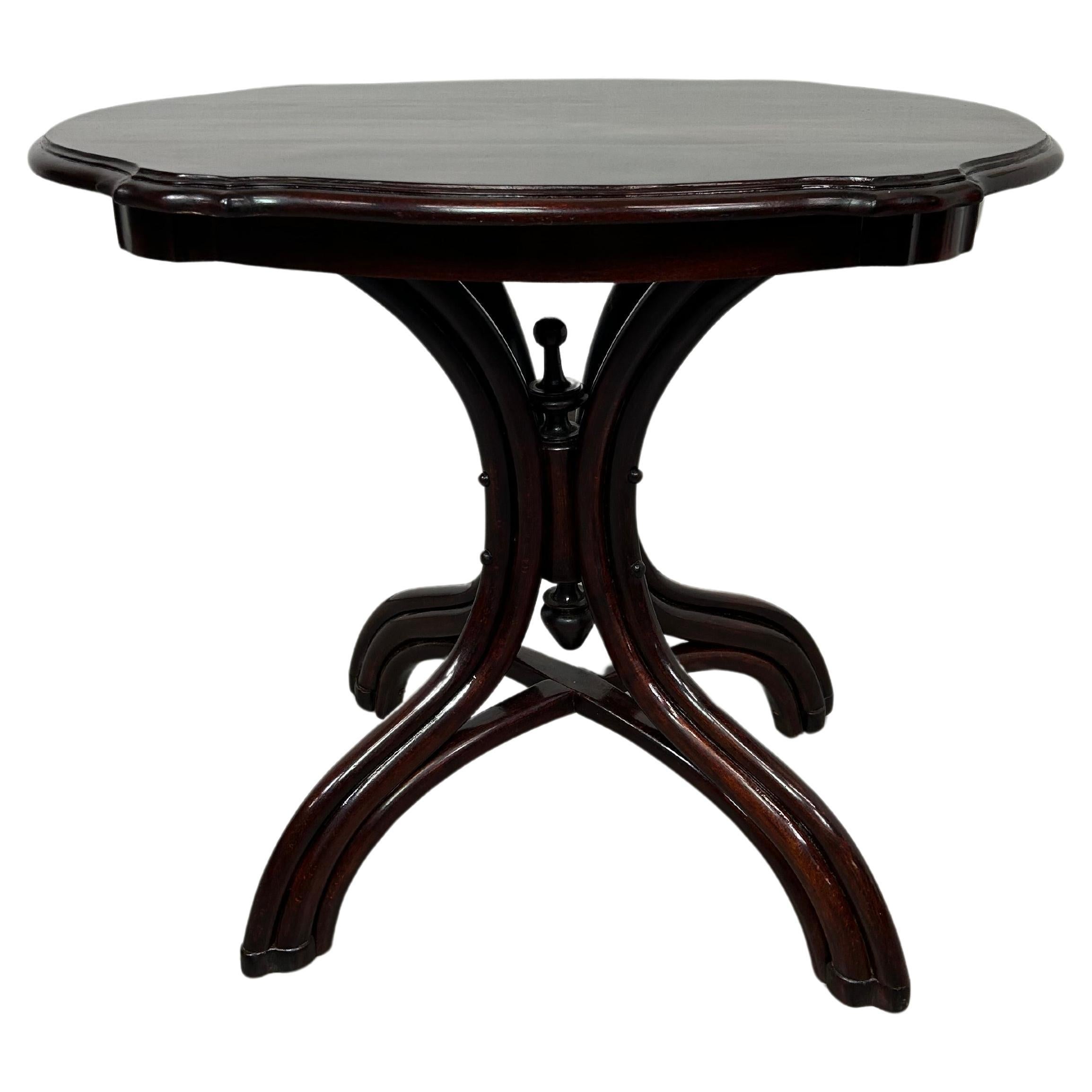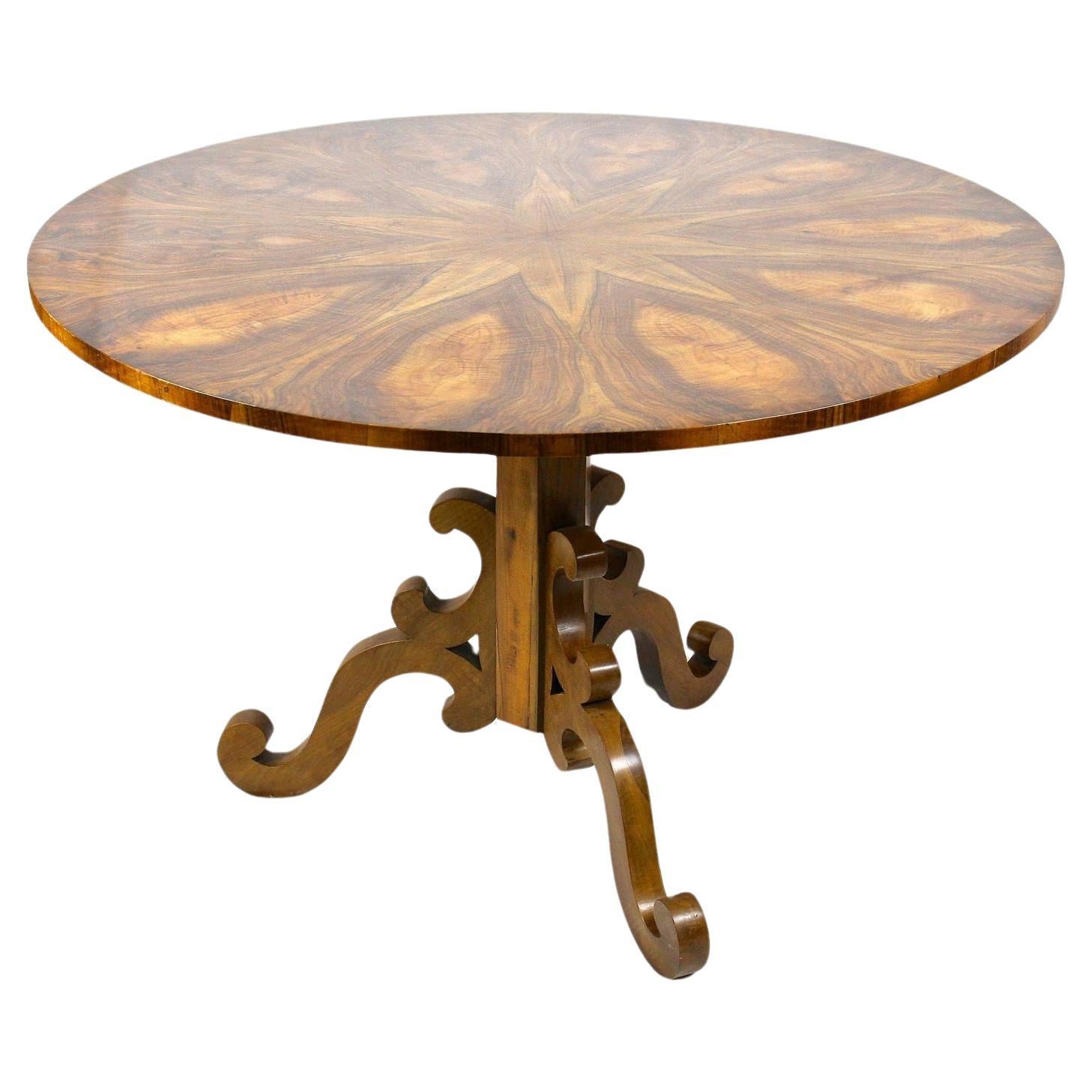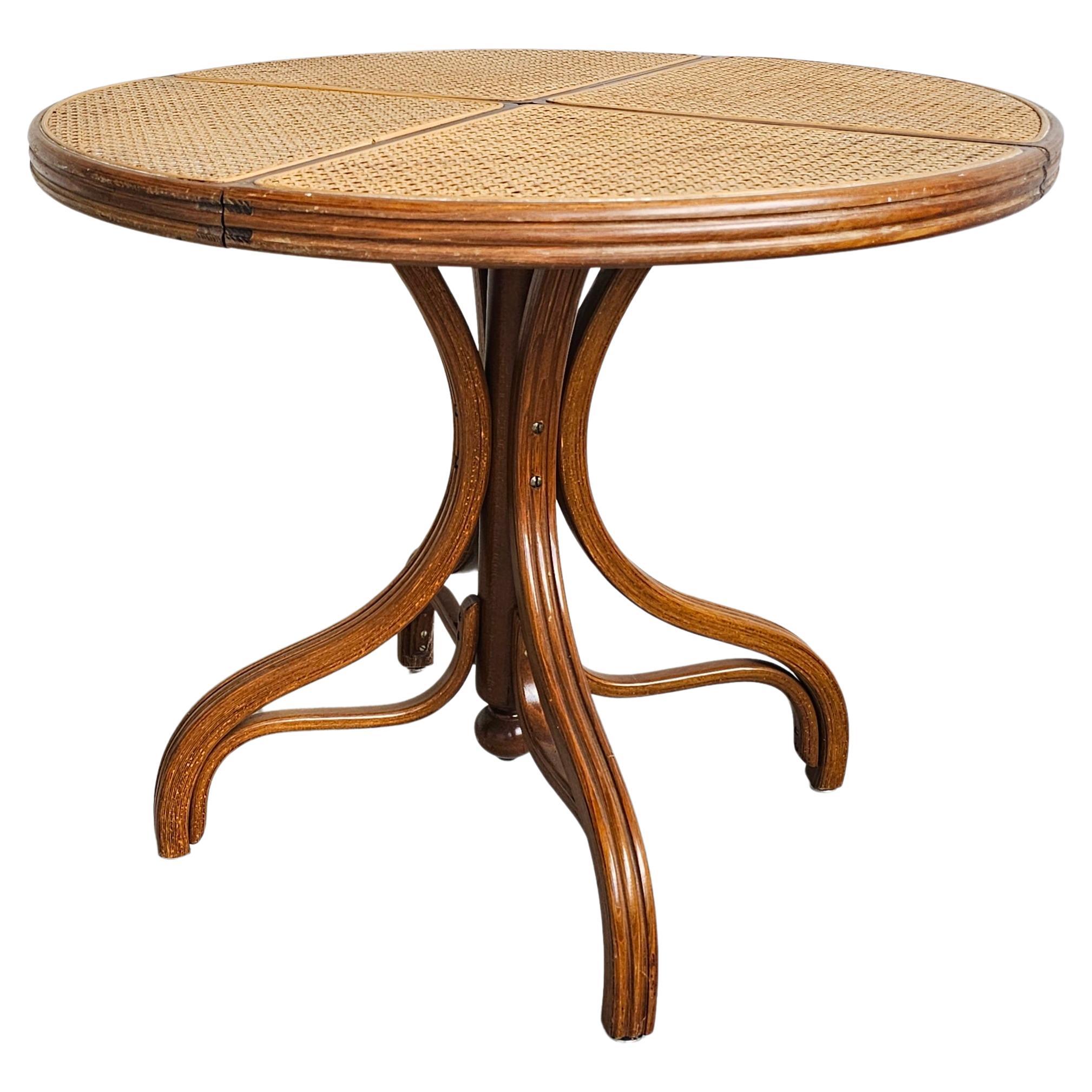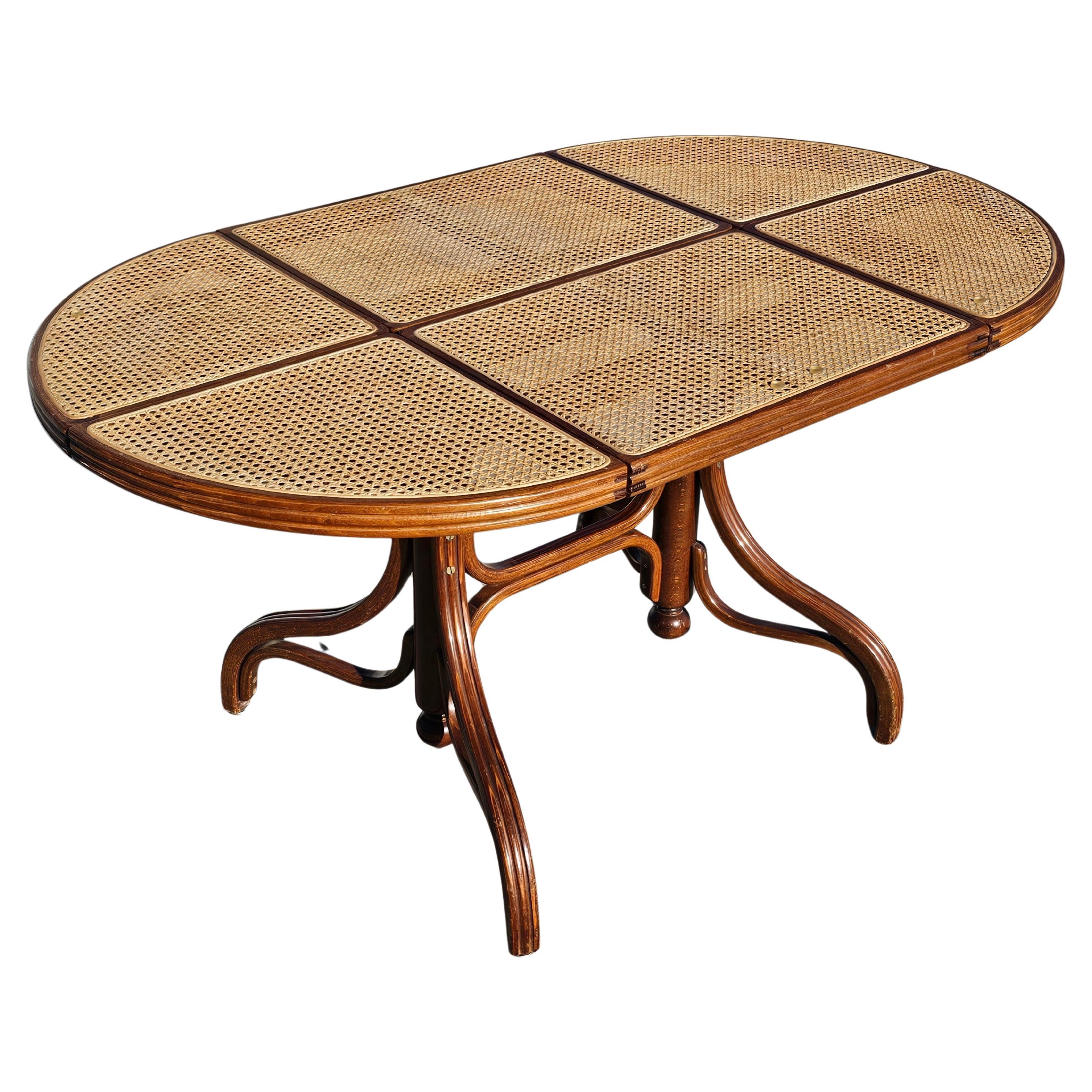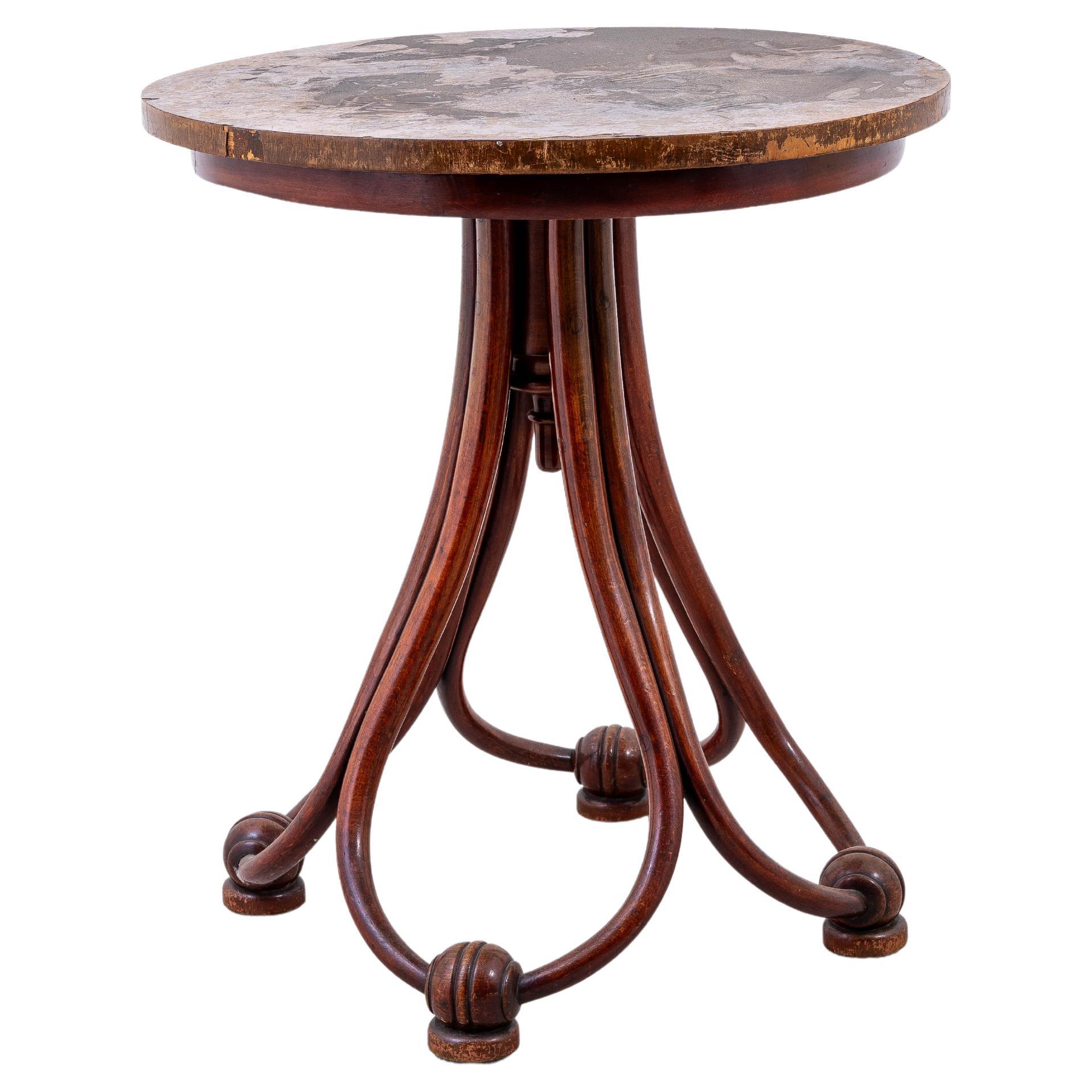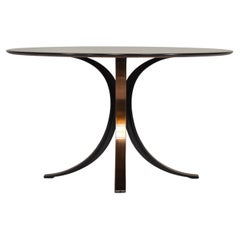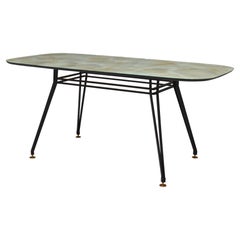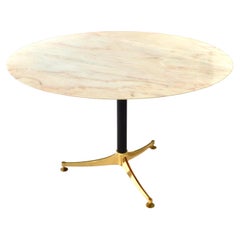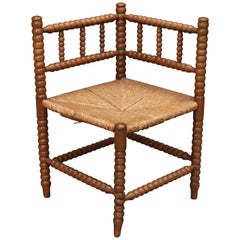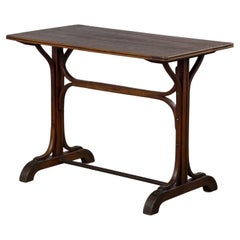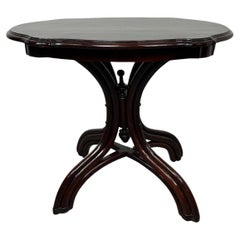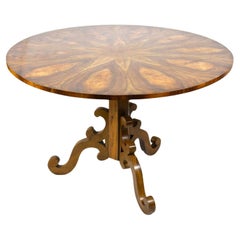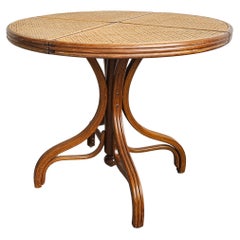Items Similar to Early Michael Thonet Bistro Dining Table in Bentwood and Cane - Austria
Want more images or videos?
Request additional images or videos from the seller
1 of 16
Early Michael Thonet Bistro Dining Table in Bentwood and Cane - Austria
$2,667.02
£1,997.39
€2,250
CA$3,738.50
A$4,118.95
CHF 2,132.22
MX$49,593.24
NOK 26,999.04
SEK 25,363.89
DKK 17,135.07
About the Item
Bistro dining table in bentwood and cane designed by Michael Thonet. Originally designed in the 1860s and produced by Thonet in the 20th century by multiple factories.
Size:
chairs: 57x49x96.5 seat height 46 Arm height 67 centimeter
table: ø85.5 height 75 centimeter
Condition: used. The lacquer has worn out on some places. The stained beech wood has discoloration. Cane in the table top is good.
The cane in two seats is damaged. The cane in one back is damaged. One arm has a crack in a curve. Some small wood details are missing. The cane can be repaired or replaced professionally on request.
Michael Thonet
The development of bentwood for use in furniture is one of history’s most significant innovations in design. A range of renowned mid-century modern designers such as Alvar Aalto, Arne Jacobsen, and Charles and Ray Eames drew heavily on this technological advancement, and the success of their enduring works owes to the efforts of pioneering German-Austrian industrialist and designer Michael Thonet — founder of Thonet and widely considered the father of bentwood furniture.
Bentwood furniture dates as far back as the Middle Ages, but it is the 19th-century cabinetmaker and master of parquetry Michael Thonet who is most often associated with this now-classic technique. Thonet in 1856 patented a method for bending solid wood through the use of steam, and from there, the bentwood look skyrocketed to furniture fame. He experimented with bending birch rods into rounded shapes — forming delicately seductive, curving Art Nouveau creations that were a daring departure from the heavy, hand-carved designs attributed to his contemporaries.
The Boppard-born Thonet honed his carpentry skills in his father’s workshop, where he carried out experiments with plywood and modified the Biedermeier chairs that populated the studio. He received an invitation from Austrian Chancellor Prince Metternich to contribute Neo-Rococo interiors to the Liechtenstein City Palace in Vienna. From there, the cabinetmaker gained international recognition, including at London’s Great Exhibition of 1851, which featured works created by members of the Arts and Crafts movement as well as industrial products. Thonet showed a range of furniture at the fair and won the bronze medal for his bentwood chairs. He incorporated his family’s company, the Thonet Brothers — or Gebrüder Thonet — with his sons in 1853.
Considered the world’s oldest mass-produced chair, Michael Thonet’s ubiquitous Chair No. 14 demonstrated that his patented bentwood technology made it possible to efficiently produce furniture on an industrial scale.
Often called the Coffee House chair — the company’s first substantial order was for a Viennese coffeehouse — the No. 14 remains an icon. Thonet originally designed the chair in 1859, and it is considered the starting point for modern furniture. Composed of just six parts, the chair, with its simple, lightweight design, belies its durability. The No. 14 was followed by the No. 18, or the Bistro chair, in 1867, and the 209, or the Architect’s chair, of which Le Corbusier was a fan. (The influential Swiss-French architect and designer used Thonet furniture in his Pavillon de l’Esprit Nouveau at the 1925 International Exposition of Decorative Arts in Paris.)
The business began mass-producing furniture. By the end of the 1850s, there were additional Thonet workshops in Eastern Europe and hundreds of employees. Michael Thonet’s reputation attracted the attention of notable architects including Otto Wagner, Marcel Breuer and Ludwig Mies van der Rohe.
Thonet’s patented bentwood technology also yielded an improvement to rocking chairs for his company — in the middle of the 19th century, Michael produced a series of rockers in which the different curved parts were integrated into fluid, sinuous wholes. Thanks to Thonet, the humble rocker acquired something unexpected: style. And bentwood furniture was embraced by a series of design greats — the innovation can be found in the seating that Josef Hoffman designed for Thonet, in the elegant Superleggera chair created by Gio Ponti and Alvar Aalto’s expressive Paimio armchair.
The No. 14 chair earned a gold medal at the 1867 Paris World’s Fair and reportedly sold 50 million copies prior to World War I. Today it’s a staple furnishing in countless movies, television shows, restaurants, bars and homes.
- Attributed to:Thonet (Manufacturer)Michael Thonet (Designer)
- Dimensions:Height: 29.53 in (75 cm)Diameter: 33.67 in (85.5 cm)
- Style:Rococo Revival (Of the Period)
- Materials and Techniques:
- Place of Origin:
- Period:
- Date of Manufacture:20th century
- Condition:Wear consistent with age and use. Minor losses. Minor fading. Condition: used. The lacquer has worn out on many places. The stained beech wood has discoloration. The cane in two seats is damaged. The cane in one back is damaged. One arm has a crack in a curve. Some small wood details are missing.Repair possible.
- Seller Location:Pijnacker, NL
- Reference Number:1stDibs: LU1712239706052
About the Seller
5.0
Gold Seller
Premium sellers maintaining a 4.3+ rating and 24-hour response times
Established in 2012
1stDibs seller since 2015
261 sales on 1stDibs
Typical response time: <1 hour
- ShippingRetrieving quote...Shipping from: Pijnacker, Netherlands
- Return Policy
Authenticity Guarantee
In the unlikely event there’s an issue with an item’s authenticity, contact us within 1 year for a full refund. DetailsMoney-Back Guarantee
If your item is not as described, is damaged in transit, or does not arrive, contact us within 7 days for a full refund. Details24-Hour Cancellation
You have a 24-hour grace period in which to reconsider your purchase, with no questions asked.Vetted Professional Sellers
Our world-class sellers must adhere to strict standards for service and quality, maintaining the integrity of our listings.Price-Match Guarantee
If you find that a seller listed the same item for a lower price elsewhere, we’ll match it.Trusted Global Delivery
Our best-in-class carrier network provides specialized shipping options worldwide, including custom delivery.More From This Seller
View AllOsvaldo Borsani T69 Round Dining Table by Tecno, Italy, circa 1960
By Osvaldo Borsani, Tecno
Located in Pijnacker, Zuid-Holland
Iconic T69 dining table by Osvaldo Borsani for TECNO, Italy – circa 1960.
Designer: Osvaldo Borsani
Country: Italy
Model: T69 dining table
Design period: circa 1960
Date of manu...
Category
Vintage 1960s Italian Mid-Century Modern Dining Room Tables
Materials
Metal, Brass
1950's Italian Dining Table with Metal Base, Glass Top and Brass Details
By Ico Parisi, Ignazio Gardella
Located in Pijnacker, Zuid-Holland
Italian dining table from the 1950’s.
The table has a black lacquered metal base with in height adjustable brass feet. The table top has a wood edge with a glass top and a stone prin...
Category
Vintage 1950s Italian Mid-Century Modern Dining Room Tables
Materials
Metal, Brass
1970's Italian Dining Table in Rosé Marble and Brass - Italy, circa 1970
Located in Pijnacker, Zuid-Holland
Gorgeous Italian dining table with Rosé / Pink marble top with elegant tapered edge. The base is made of a heavy tripod solid brass foot and black lacquered metal. It has adjustable ...
Category
Vintage 1970s Italian Mid-Century Modern Dining Room Tables
Materials
Marble, Metal, Brass
Stunning French Corner Chair in Turned Oak and Cane, France, 1930-1940
Located in Pijnacker, Zuid-Holland
Stunning French solid turned oak wood corner chair with original woven cane seat, circa 1930-1940. In very good condition. One leg is slightly bent naturally. The chair is structural...
Category
Vintage 1930s French Mid-Century Modern Armchairs
Materials
Cane, Oak
8x Thonet 811 Prague Armshairs by Josef Hoffmann in Bentwood and Cane – Austria
By Josef Hoffmann, Thonet
Located in Pijnacker, Zuid-Holland
1 chair is a slightly later model and somewhat different from the other 7 (see images).
Designer: Josef Hoffmann
Manufacturer: Thonet
Country: Austria
Model: Thonet 811...
Category
Vintage 1920s Austrian Bauhaus Dining Room Chairs
Materials
Beech, Cane, Bentwood
$4,551 Sale Price / set
20% Off
Exquisite Round Travertine Dining Table in the manor of Up& Up
By Up&Up, Peter Draenert
Located in Pijnacker, Zuid-Holland
Introducing this exquisite Round Travertine Dining Table – Elegance in the Manor of Up&Up and Angelo Mangiarotti
Manufacturer: in the manor of Up&Up
Model: round dining table
Desig...
Category
Vintage 1970s Italian Mid-Century Modern Dining Room Tables
Materials
Travertine
You May Also Like
French Thonet Style Bentwood Bistro Table
By Thonet
Located in Astoria, NY
An elegant early 20th century French bistro table in the Thonet style, sourced in Provence, France. Crafted from solid wood with gracefully bentwood supports and shaped feet mounted ...
Category
Early 20th Century French Art Nouveau Dining Room Tables
Materials
Bentwood
19th century bentwood Thonet table
By Michael Thonet, Thonet
Located in Banská Štiavnica, SK
19th century bentwood Thonet table professionally stained and repolished.
Category
Antique 19th Century Austrian Vienna Secession Tables
Materials
Beech, Bentwood
19th Century Biedermeier Nutwood Dining Table / Center Table, Austria, ca 1830
Located in Lichtenberg, AT
Striking round early 19th century Biedermeier dining- or center table coming from the famous period in Vienna/ Austria. Elaborately handcrafted around around 1830, this gorgeous round antique...
Category
Antique 1830s Austrian Biedermeier Dining Room Tables
Materials
Nutwood
Rare Dining Table with Cane Top by Mundus, Yugoslavia 1960s
By J & J Kohn & Mundus
Located in Beograd, RS
In this listing you can find a beautiful and very rare Mundus dining table, done in solid wood, with rattan top and glass cover. This beautiful, vintage dining table will make a perf...
Category
Vintage 1960s Croatian Art Nouveau Dining Room Tables
Materials
Cane, Beech
Rare Vintage Dining Table with Cane Top by Mundus, Made in Yugoslavia in 1960s
By J & J Kohn & Mundus
Located in Beograd, RS
In this listing you can find a beautiful and very rare Mundus dining table, done in solid wood, with rattan top and glass cover. This beautiful, vintage dining table will make a perf...
Category
Vintage 1960s Croatian Art Nouveau Dining Room Tables
Materials
Cane, Beech
Thonet - by Michael Thonet - Side table - Beech
By Thonet, Michael Thonet
Located in Budapest, HU
Thonet - Michael Thonet - Side Table - Beech
Austria, Jugendstil (Art Nouveau) - Circa 1900-1910
This beautiful side table, designed by the renowned Michael Thonet, exemplifies the ...
Category
Antique Early 1900s Austrian Art Nouveau Side Tables
Materials
Beech
$1,223 Sale Price
20% Off
More Ways To Browse
Thonet Table Bentwood
French 19th Century Bistro Table
City Antique Vienna
Mid Century Modern Bistro Table
Swiss Hand Carved Wood Chairs
Austrian Rococo
Austrian Rococo Furniture
Thonet Bentwood Dining Table
Le Fanion
Thonet Bistro Table
Bentwood Bistro Table
Mies Van Der Rohe Rocker
180cm Round Table
19th Century Regency Mahogany Twin Pedestal Dining Table
4 Leg Carved Table
42 Inch Dining Table
52 Inch Table
6 Legged Table
